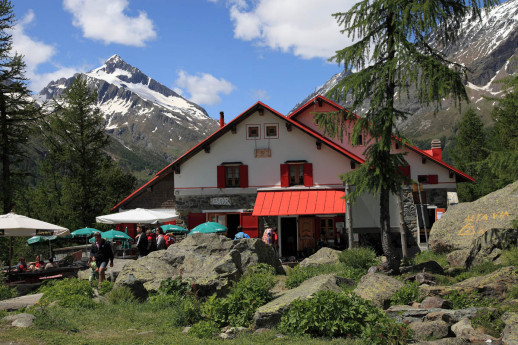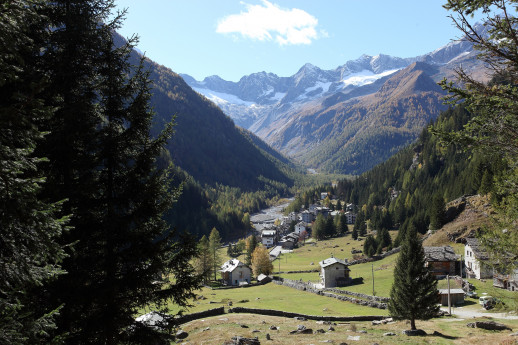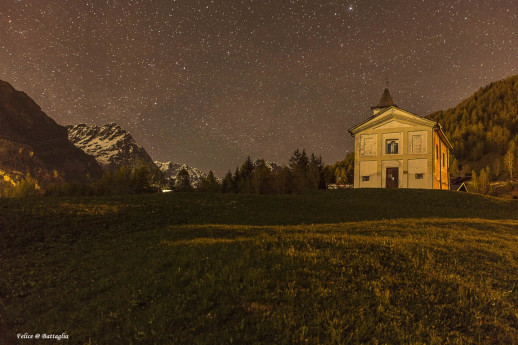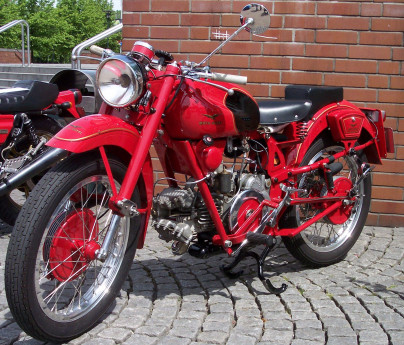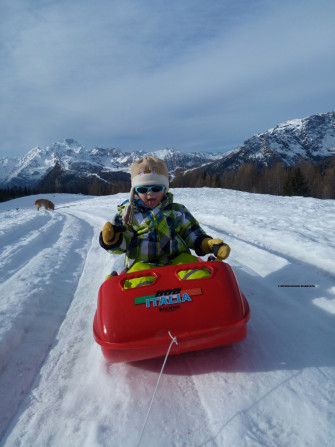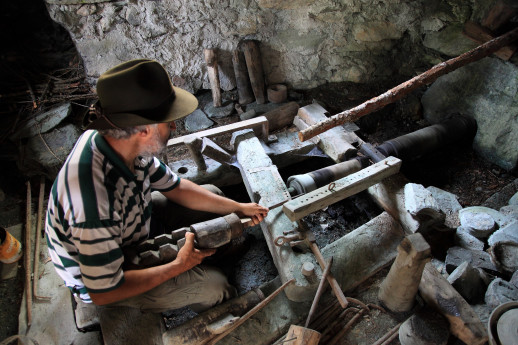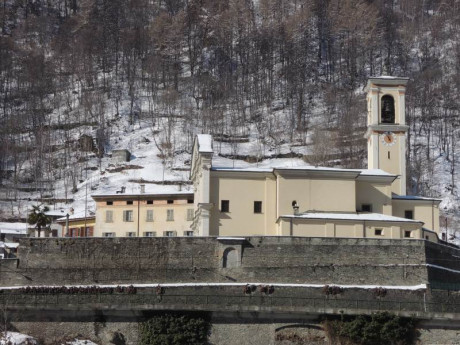Church of Santa Maria Nascente
The Parish church in Torre di S. Maria was built on the ruins of a previous church - a smaller late Medieval building built at the beginning of the 15th
, dedicata a Santa Maria Nascente, sorge sulle rovine di una chiesa ad essa preesistente, un edificio tardo medievale di dimensioni più modeste eretto nei primissimi anni del Quattrocento e consacrato nel 1415. Di questa antica chiesa è ancora presente un muro, inglobato in quella attuale, posto di fianco alla parete di destra che conduce alla sagrestia, sul quale sono visibili, benché molto sciupati, tre ritratti raffiguranti i volti della Madonna e di due Santi e una parete della sagrestia stessa dove è ancora ben visibile un affresco raffigurante un vescovo, un gruppo di angeli e un volto femminile.
La chiesa, quasi del tutto ricostruita nel 1620 e allungata nel 1919, sorge su un vasto terrapieno e ha davanti un bel piazzale in posizione dominante sulla vallata. Di fronte alla facciata vi è una cappellina con affrescata la Deposizione, dipinta nel 1839 da Giacomo Brazzi e una colonna con in alto una croce di ferro, eretta nel 1765.
La facciata della chiesa è stata ricostruita dopo l’ampliamento dell’edificio: nella nicchia centrale vi è una statua della Madonna. Il piano del cornicione è suddiviso in quattro lesene: quella superiore ha al centro un finestrone sormontato da un cartiglio e due nicchie laterali che ospitano le statue di San Pietro e di San Paolo.
Il piano inferiore ha al centro il portale con i battenti in legno intagliato, datato 1683.
L’interno è spazioso con due cappelle su ogni lato. Il soffitto a volta ha tre medaglioni di Giovanni Gavazzeni raffiguranti l’Assunta, il Presepe e la Vergine Immacolata, mentre sulla volta del presbiterio lo stesso artista raffigurò l’Assunzione della Vergine, i Quattro Evangelisti, l’Annunciazione e la Sacra Famiglia.
Sulla parete di sinistra è appesa una tela, in un’elegante cornice rinascimentale, raffigurante l’Adorazione di Gesù Bambino da parte della Vergine e dei santi Gottardo, Giacomo, Filippo e Rocco, forse riconducibile a Vincenzo de Barberis (1530). La seconda cappella di sinistra ha sull’altare una ricca ancona a forma di portale con due colonne: al centro è collocata una statua della Madonna. Ai lati dell’ingresso della cappella sono posti due angeli in legno dorato e dipinto (sec. XVIII). Segue il pulpito in legno intagliato sovrapposto ad un confessionale (sec. XVIII).
Nel presbiterio si notano l’altar maggiore in marmi pregiati, il ciborio marmoreo con colonnine e pilastrini e con una statuetta raffigurante Cristo. Sulle pareti laterali sono collocati dei banconi corali in legno intagliato (sec. XVII).
La seconda cappella di destra è decorata di stucchi e ha una nicchia con una statua moderna di Sant’Antonio. Sulla parete di destra sono immurate, entro cornici ovali, tre teste di santi, probabili frammenti di affreschi andati distrutti durante i lavori di ampliamento della chiesa (sec. XVI).
Nella sagrestia vi sono mobili in legno intagliato (sec. XVII e XVIII) e numerosi arredi argentei. Tra i paramenti, notevole è lo stendardo di seta ricamata che venne acquistato a Milano, nel 1796, da alcuni abitanti del paese.
Fonte - Ecomuseo della Valmalenco
